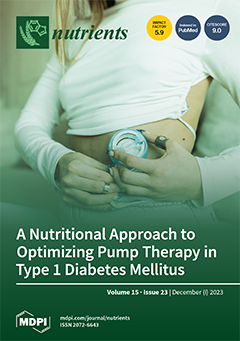(1) Background: Both tooth loss and diabetes have high global prevalence, and both have a significant influence on patients’ general health and quality of life. Previous research has indicated a possible connection between tooth loss and diabetes, but it has been unclear whether tooth loss has an effect on the development of diabetes and how it affects it. We aim to investigate the relationship between insulin resistance (IR) and tooth loss and examine how the systemic immune-inflammation index (SII) level and diet quality mediate it. (2) Methods: The cross-sectional study data were obtained from the National Health and Nutrition Examination Survey (NHANES). After describing and comparing baseline data, we used regression models to evaluate the relationship between IR and tooth loss, diet quality and tooth loss and IR, SII and tooth loss and IR. Furthermore, we applied bootstrapping to test the mediation effect of diet quality and SII between tooth loss and IR. Diet quality is reflected by the HEI (Healthy Eating Index)-2015 score. (3) Results: The total number of subjects included was 8197, with 3861 individuals belonging to the IR group (HOMA-IR ≥ 2.5) and 4336 in the non-IR group (HOMA-IR < 2.5). In the model with all covariates adjusted, tooth loss in the fourth quartile was found to be positively correlated with an increase in HOMA-IR (OR = 1.301; 95% confidence interval (CI) = [1.102, 1.537];
p < 0.001) compared to the first quartile; tooth loss in the fourth quartile correlated with the HEI-2015 score compared to the first quantile (β = −0.121, 95% CI = [−4.839, −2.974],
p < 0.001); and the highest number of tooth loss was found to have a significant effect on SII (β = 0.032; 95%CI = [1.777, 47.448];
p < 0.05). Compared to average diet quality, best diet quality acts as a safeguard against elevated HOMA-IR (OR = 0.776; 95% CI = [0.641, 0.939];
p < 0.01); inadequate diet quality is a risk factor (OR = 1.267; 95%CI = [1.138, 1.411];
p < 0.001) conversely. Meanwhile, it can be seen that compared with the first quantile of SII, the highest score is significantly correlated with the higher incidence of IR (OR = 1.363; 95%CI = [1.179, 1.575];
p < 0.001). Diet quality and SII played a partial mediating role in the relationship between HOMA-IR and tooth loss, and the mediating effect ratio for the total effect value was 4.731% and 4.576%, respectively. The mediating effect of SII and diet quality in the association of the relationship between HOMA-IR and tooth loss both was 0.003 (95%CI = [0.001, 0.004]). (4) Conclusions: Our study revealed the relationship between IR and tooth loss, and further explored the mediating role of SII and diet quality between the number of missing teeth and IR, emphasizing that improving diet quality and reducing SII can effectively prevent and treat IR and related diseases. It provides new theoretical support for the study of IR mechanisms and new ideas and approaches to deal with related diseases.
Full article


